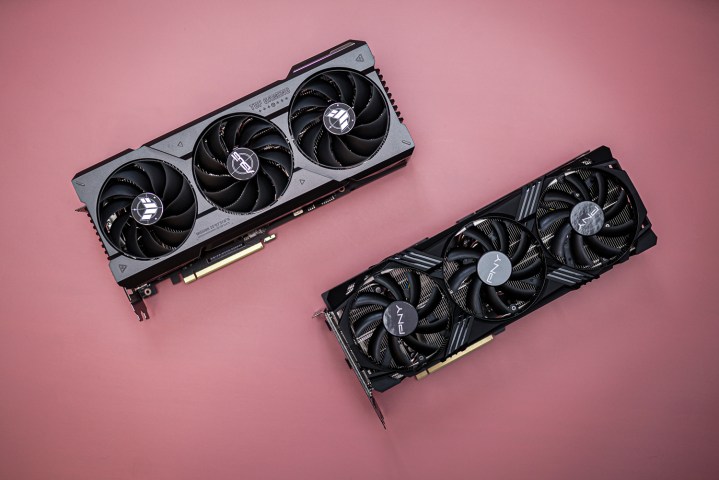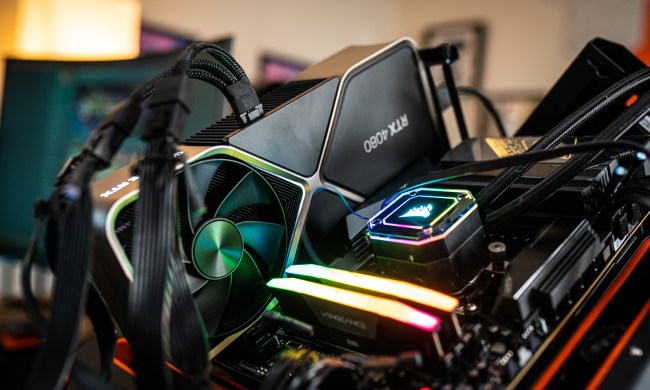
Rumors are starting to circulate around Nvidia’s upcoming RTX 50-series GPUs, which are expected to begin rolling out later this year. Specs for the full range of desktop cards have been shared by well-known leaker kopite7kimi on X (formerly Twitter), and it looks like most of the range is set to get a downgrade in the next generation — at least in terms of core count.
The leaker shared core counts and the memory interface for the suspected range of GPUs, following up rumors for the RTX 5090 and RTX 5080 a little over a week ago. The GB205 GPU is expected to go in the RTX 5070, and the leaker claims it will come with 50 Streaming Multiprocessors (SMs). The AD104 GPU, seen in the RTX 4070, RTX 4070 Super, and RTX 4070 Ti, comes with 60 SMs.
GB202 12*8 512-bit GDDR7
GB203 7*6 256-bit GDDR7
GB205 5*5 192-bit GDDR7
GB206 3*6 128-bit GDDR7
GB207 2*5 128-bit GDDR6— kopite7kimi (@kopite7kimi) June 11, 2024
Before panicking, it’s worth pointing out that these are rumored GPU specs. They aren’t specs for graphics cards. Nvidia will trim down its GPUs for different models, and we don’t have any details on how Nvidia will slice up its cards. The AD104 GPU has 60 SMs, for example, but the RTX 4070 only comes with 46. Only the RTX 4070 Ti has access to the full GPU core. We could see a similar setup in the next generation.
Things are a little more interesting lower down the stack, particularly for the GB207 GPU. This core is expected to go inside the RTX 5060, replacing the AD107 core inside the RTX 4060. It comes with 20 SMs, according to the leaker, which is a downgrade from the 24 SMs in the AD107 GPU.
Unlike higher-end GPUs, Nvidia doesn’t segment its lower-end cores as much. The RTX 4060, for instance, comes with the full AD107 core. The RTX 5060 will likely come with the full GB207 core,as well.
Kopite7kimi also claims this is the only GPU out of the range that will use GDDR6 memory, while the rest of the range will use the new GDDR7 memory standard. If these specs hold up, the RTX 5060 might struggle compared to the rest of the range given its reduced core count and older memory support.
Way too early to tell

Although it’s interesting looking at rumored specs, they don’t say much about how these graphics cards will work in practice. For starters, these are just rumored specs — Nvidia hasn’t said anything about RTX 50-series GPUs outside of launching the Blackwell architecture in the data center. That’s another factor at play. RTX 50-series cards will use the new Blackwell architecture, which could bring plenty of performance improvements, even at a lower core count.
As we enter the second half of the year, it won’t be long until we know more about Nvidia’s next-gen GPUs. The rumor mill can’t quite agree on whether Nvidia will launch the cards in the back half of this year or in early 2025, but they should arrive shortly. Nvidia typically uses its fall Graphics Technology Conference (GTC) event to announce new generations of desktop graphics cards, so if we see a fall GTC event show up on Nvidia’s calendar, that’s where we’ll likely hear about RTX 50-series cards.




